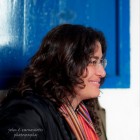You are hereWeb
Web
Mubil, a Digital Laboratory: Creating an Interactive Visitor Experience in a Library-Museum Environment
Alexandra Angeletaki, Norwegian University of Science and Technology (NTNU) University library, Gunnerus branch, Trondheim, Norway
Marcello Carrozzino, Percro laboratory, Scuola Santa Anna, Pisa, Italy.
Chiara Evangelista, Percro laboratory, Scuola Santa Anna, Pisa, Italy.
Letizia Jaccheri Department of Computer and Information Science, NTNU, Norway
Digital Media In Everyday Life: A Snapshot of Devices, Behaviors, and Attitudes Part 1: Mobile Device Ownership
Steven Beasley and Annie Conway, Museum of Science and Industry, Chicago, USA
http://msichicago.org/digitallife
Abstract
The new website of the Musée du Louvre
The musée du Louvre launched a new version of its web site in November 2011. With more than 3000 pages, www.louvre.fr gathers the most comprehensive information available on the palace and its works.
Using Grid-based Web Design to Optimize Content Authoring and Presentation
Matt Gipson and Charles Moad, Indianapolis Museum of Art, USA
Abstract
Grid-based Web design and the corresponding tools provide an accelerated path for Web designers, developers, and content authors alike with the added benefit of providing a cleaner and more structured presentation to website visitors. By borrowing this design approach from print publications and applying it to the Web, a common and simplified language can be utilized by all members of a website team. Free templates are available online to serve as starting points for creating sites with a fixed number of columns (usually twelve or sixteen). Designers are then freed to focus on style more than layout, developers can create powerful layouts simply by assigning CSS classes expressing column size, and content creators can use simple tools to create rich text and image layouts using the same column convention. All parties involved can speak a simplified column number sizing system as opposed to pixel dimensions. We show how the Indianapolis Museum of Art has been using this technique to optimize our Web development efforts in addition to WYSIWYG and WIKI tools that enable content authors.
Keywords: grid, Web, graphic design, layout
Delivering Gallery Interactives using Web Technologies
Using Grid-Based Web Design to Optimize Content Authoring and Presentation
Grid-based web design and the corresponding tools provide an accelerated path for web designers, developers, and content authors alike with the added benefit of providing a cleaner and more structured presentation to web site visitors.


